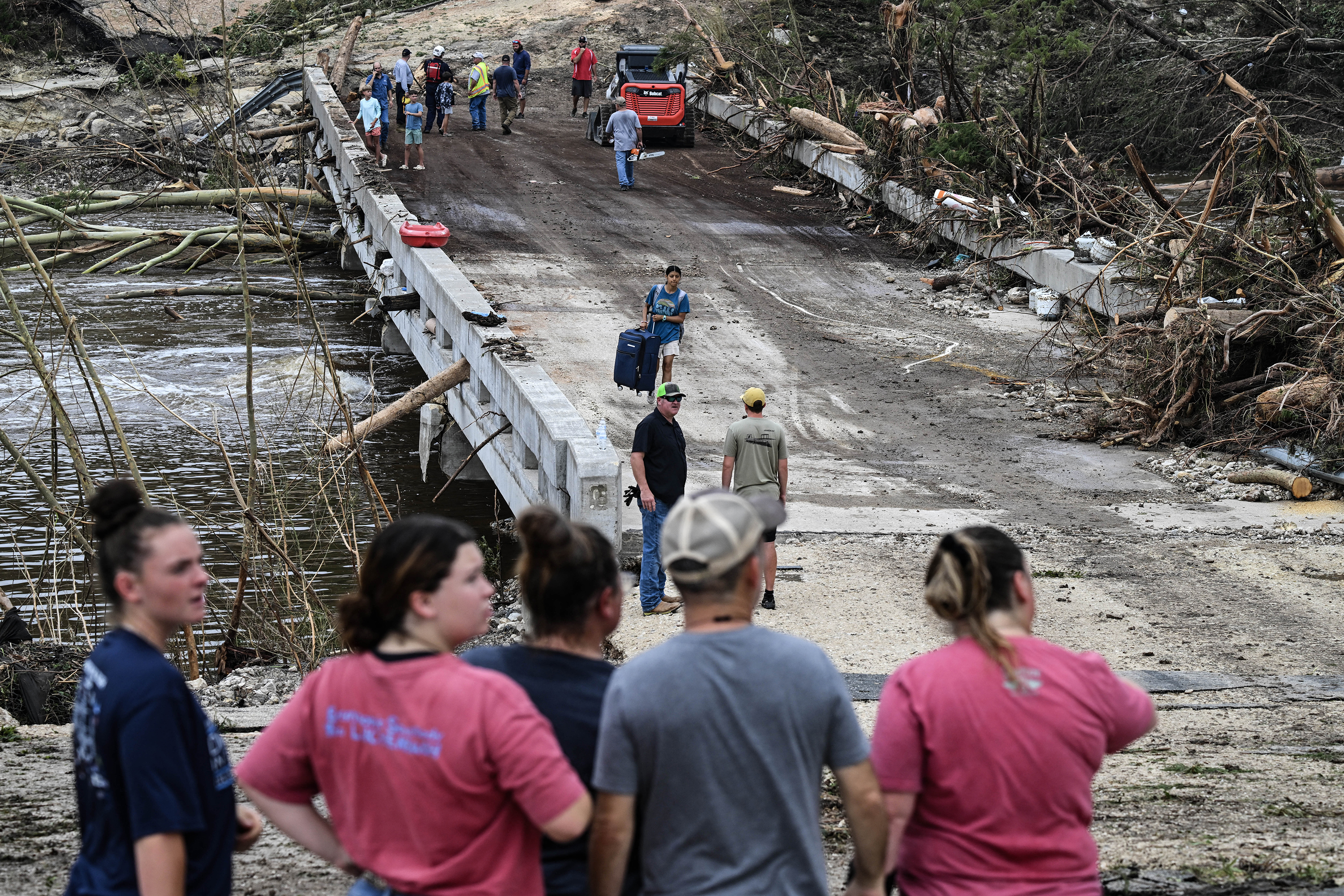East Texas Human Needs Network presents Smith County health report
Published 5:35 am Thursday, July 20, 2023

- Jackie Clay, CEO of ETHNN (East Texas Human Needs Network), gives a presentation on the latest Comprehension Community Needs Assessment Data.
The East Texas Human Needs Network (ETHNN) hosted a symposium on Tuesday to reveal the latest data of the Comprehensive Community Needs Assessment (CCNA) at Brookshire’s Conference Center.
“This is essentially a survey fielded by ETHNN every three years where they try to learn about the various needs of the community from their health needs all the way to social needs,” said Kimberly Elliott, PhD, associate professor with the Department of Healthcare Policy, Economics and Management at The University of Texas Health Science Center at Tyler. “They use that data, that information to be strategic in approaching how ETHNN can bring certain services to Smith County, how they can partner to go after grants and create programs to assist the community in need.”
Since 2013, ETHNN has been collecting data in Smith County in the hopes of figuring out the most pressing issues in the community and implementing solutions and support. The event takes place very three years to allow time to collect data.
“ETHNN does a really great job with partnering with other organizations who can be stakeholders for the community and they can use this data to go after grants to bring it back to East Texas to implement change, hopefully, based on what the data tells us,” Elliott said.
The CCNA findings covered areas like health, behavioral health, housing, transportation, employment, education and community and economic well-being.
“As a school, we provide faculty expertise, data analysis mechanisms to get the survey done and partnering with all these incredible community organizations is really amazing,” said Dr. Brigham Willis, dean of UT Tyler’s new School of Medicine.
ETHNN partnered with the faculty and researchers at UT Tyler to help develop the survey and to analyze the data and to report that information in a format that is easy to read for all of their stakeholders.
According to Willis, issues such as access to affordable medication and different types of care and access to food, as well as neighborhood safety, were all focuses of the study.
As co-chair of ETHNN’s Health Council, Jesi McKenzie looks at the health concerns first.
“I want to know what I can do to help with the resources that I have available,” she said. “I’m always really interested in seeing what the healthcare coverage gap looks like because that’s a really pressing issue for East Texas that is driven by legislation that’s very far removed from us, but has real life impacts to our neighbors.”
According to the findings, the majority (77.9%) of respondents resided in Tyler with 22.1% from other towns. Women comprised roughly 2/3 of respondents (65.2% female, 34.3% male). Of respondents, 48% were white, 38% were African American, and 14% listed their race as other (including multiracial, American Indian, Asian and others). Non-Hispanics were the majority (80%) with 20% being Hispanic.
The CCNA findings had no differences in gender distributions of respondents by race, but among Hispanic respondents there was a higher prevalence of women (74%) as compared to non-Hispanics (64%). The average age of respondents was 48.29 years old, and the oldest participant was 88 years old.
With Tyler the size of community it is, it also is made up of a lot of rural communities with many people who may not be aware of the resources available, according to McKenzie.
“We think the best way to solve that problem is by bringing all of those folks together at the table and making sure that there’s awareness, making sure it’s easy to access those services, finding out what the barriers are and trying to… tear them down block by block,” McKenzie said.
Smith County’s CCNA presented in this report is based on original survey data collected by 16 ETHNN volunteers at 11 separate locations around Smith County between Jan. 10 and May 17 of this year.
ETHNN participates in the development and support of public policy to assist low income and vulnerable populations, then uses those findings to educate the public and advocates for those populations and for support of those agencies that help people in need.
“We’re here for the community and to be part of the community,” Willis said. “And the first step in doing that is to understand the needs of the community and that’s what this study was all about.”
To read CCNA’s full report, go to www.ethnn.org/uploads/1/4/0/3/14034592/2023_ccna_final_report.pdf.
Employment
About 44% of respondents were employed full-time or part-time while 17.3% were unemployed, 21.3% were out of the labor force (retired, student, or homemaker), and 12% were unable to work (disabled). Forty-two percent of respondents indicated that they had at least one job assistance need.
Job skills training (16.5%), work clothes (15.4%) and need of equipment — such as a computer (14.6%) were the top concerns with employment.
Education
Almost 30% of participants are high school graduates while 22.3% had less than a high school diploma, 24% had some college or technical school education, and 22.3% had an associate, bachelor or graduate degree.
The most commonly mentioned education related needs were largely resource related such as tuition (13.0%), school supplies (10.6%), and school clothes (9.6%). It is of note that the third most referenced need was basic education for adults.
Housing
An estimated 29.2% of the sample did not have steady housing at the time of the survey or they have housing but were worried about losing their place to live in the future. The average number of people living with the respondent ranges from 1 to 12 people.
The average number of people living with the respondent was 4.2. About a third (33%) of the sample live in a household with five or more people. Hispanic respondents were more likely to live in households with larger family sizes. No statistically significant difference was observed in household size by race.
Paying for utilities, finding affordable housing, and getting help with rental/mortgage were the top three most identified housing needs by the respondents.
Transportation
Lacking reliable transportation was reported by 28.7% of the participants as a major issue that kept people from making their medical appointments, meetings, work or from getting things needed for daily living.
Approximately one quarter of respondents identified needing gasoline (24.7%) or needing a vehicle (24.5%) as their top transportation-related needs. Needing assistance with bus tickets (17.6%) and attaining a driver’s license (15.2%) were the next most common needs identified by survey respondents.
Health
Accessing prescription medication topped the list of healthcare needs among respondents to the CCNA. Access to dental care (29.3%), primary care services for adults (28.2%), and accessing medical equipment/devices/prosthetics (24.7%) all were cited as needs by a quarter or more of respondents.
Economic Well Being
The most common financial need identified by respondents was not being able to pay bills every month (37.4%), followed by healthcare expenses (23.1%) and bad credit (19.9%). Having past due bills (16.9%) and having car insurance (14.8%) rounded out the top five most common financial needs.






